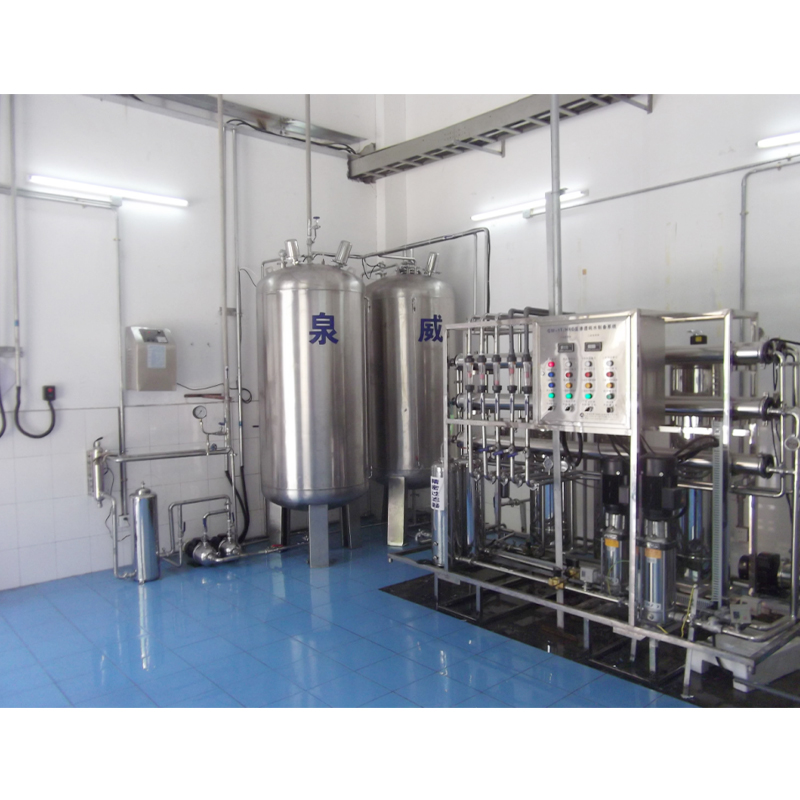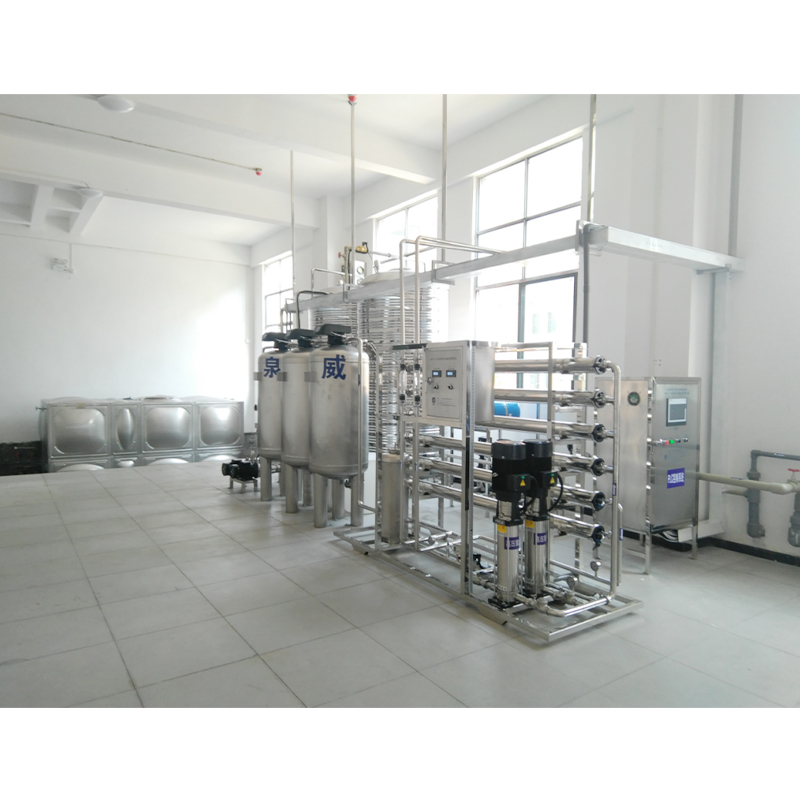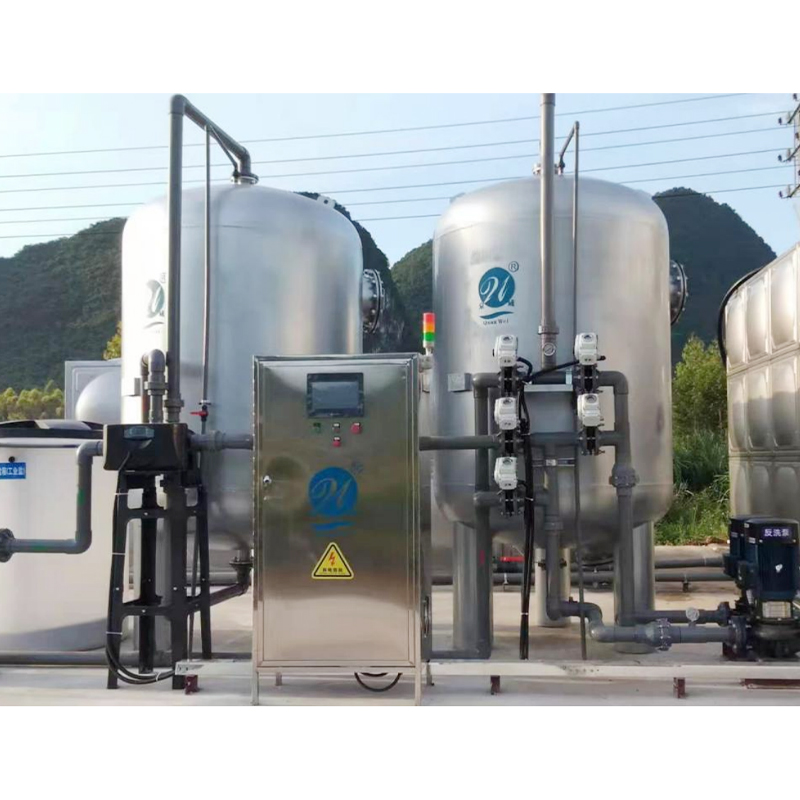What factors affect the desalination rate of membrane elements in reverse osmosis pure water preparation device?
Release Time : 2025-10-16
In a reverse osmosis pure water preparation device, the salt rejection rate of a membrane element is a core performance indicator, directly determining whether the produced water quality meets industrial or domestic water standards. This indicator is influenced by multiple factors, including raw water characteristics, operating parameters, membrane element condition, and maintenance methods. A comprehensive analysis of the influencing mechanisms at the system level is required.
Raw water characteristics are a fundamental factor influencing salt rejection. When the salt concentration in raw water is too high, the osmotic pressure difference across the membrane increases. If the operating pressure is not adjusted synchronously, the probability of salt ions permeating the membrane increases significantly, resulting in a decrease in salt rejection. Furthermore, when the raw water contains excessive levels of colloids, organic matter, or metal ions, a fouling layer easily forms on the membrane surface, which not only blocks water permeation but also damages the membrane's selective separation structure, indirectly impairing salt rejection performance. Furthermore, when the raw water pH deviates from the optimal range for the membrane element, the charge state of the membrane material changes, weakening its ability to retain salt ions. For example, while acidic conditions can reduce the risk of membrane clogging, the salt rejection rate decreases due to the weakened charge interaction.
Controlling operating parameters has a direct impact on salt rejection. Operating pressure is a key parameter. When the pressure is too low, water molecules struggle to overcome the osmotic pressure and permeate the membrane, while salt ions tend to remain or reverse permeate, resulting in substandard salt rejection. Excessively high pressure can exacerbate physical damage to the membrane element and shorten its service life. Operating temperature also requires precise control. Excessively high temperatures accelerate molecular movement, making it easier for salt ions to pass through the membrane pores. This also accelerates membrane material aging, and long-term operation can lead to an irreversible decrease in salt rejection. Furthermore, low influent flow rates can exacerbate concentration polarization on the membrane surface, increasing localized salt concentrations and the chance of salt ion permeation. Optimizing flow design requires balancing desalination efficiency and energy consumption.
The condition and maintenance of membrane elements directly impact the stability of desalination capacity. Physical damage to membrane elements over time, such as broken membrane fibers or seal failure, can cause unfiltered raw water to mix directly into the product water, resulting in a sudden drop in salt rejection. If membrane elements are not regularly cleaned, surface contamination will accumulate, forming a dense layer that hinders salt ion retention. Overused membrane elements, due to aging and changes in their pore structure, naturally degrade their retention performance. Therefore, establishing a scientific maintenance system, including regular chemical cleaning, performance testing, and timely replacement, is a key measure to ensure stable salt rejection.
The manufacturing process and material properties of membrane elements determine their theoretical upper limit for salt rejection. The density of the desalination layer of a reverse osmosis membrane element is a key indicator. The denser the desalination layer, the stronger its ability to block large molecules and ions, resulting in higher salt rejection, but also a corresponding decrease in water production. Membrane elements of different materials have different removal rates for specific substances. For example, the removal rate for high-valent ions and complex monovalent ions is generally higher than that for monovalent ions. They have a higher removal rate for larger molecular weight organics, while smaller molecular weight organics may have a lower removal rate due to membrane pore size limitations. Therefore, it is important to select the appropriate membrane element type based on the composition of the raw water.
The impact of dissolved gases and hydrogen bonding on salt rejection is often overlooked. Free soluble gases, such as carbon dioxide and sulfur dioxide, easily permeate the membrane and remain unremoved, resulting in increased product water conductivity. Compounds with strong hydrogen bonds, such as water, phenols, and ammonia, have weaker interactions with the membrane material, resulting in lower removal rates. These compounds require pretreatment or specialized membrane material modifications to improve performance.
Microbial and solid particle contamination are hidden factors contributing to reduced salt rejection. Microorganisms and bacteria in the raw water multiply on the membrane surface, forming biofilms that block water permeation and release metabolites that contaminate the membrane. Solid particles can scratch the membrane surface or clog its pores, requiring removal through pretreatment methods such as filters and ultrafiltration membranes. Furthermore, metal oxides are difficult to remove on their own once they enter the reverse osmosis system and require regular chemical cleaning to prevent the formation of deposits that affect desalination performance.
The salt rejection rate of membrane elements in reverse osmosis pure water preparation devices is influenced by multiple factors, including raw water characteristics, operating parameters, membrane element condition, manufacturing process, dissolved gases, microbial contamination, and maintenance methods. In actual applications, it is necessary to optimize the pretreatment process, accurately control the operating parameters, select suitable membrane element types and establish a scientific maintenance system in order to achieve a stable and efficient desalination rate and provide reliable protection for industrial production and domestic water.







